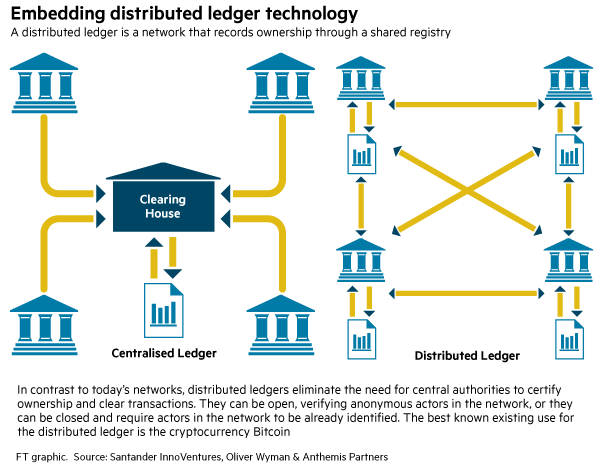Blockchain and distributed ledgers

Retrieved 29 August Distributed Ledgers are mostly known because of their use as cryptocurrencies, even if technically speaking the cryptocurrency and the underlying ledger are two different things. From Wikipedia, the free encyclopedia. Retrieved 7 December blockchain and distributed ledgers Restructuring and Innovation in Banking.

Retrieved from " https: Retrieved 17 February Incumbent banks are investing heavily in distributed ledgers as a cost-saving measure and a way to reduce operational risks. Blockchain and distributed ledgers GovernmentOffice for Science. Other possible uses beside cryptocurrencies include Smart Contracts First introduced by Ethereum or file storage.

Distributed ledgers may be permissioned or blockchain and distributed ledgers regarding if anyone or only approved people can run a node to validate transactions. Views Read Edit View history. From Wikipedia, the free encyclopedia. Retrieved 21 November Distributed Ledgers are mostly known because of their use as cryptocurrencies, even if technically speaking the cryptocurrency and the underlying ledger are two different things.

Distributed Ledgers are mostly known because of their use as cryptocurrencies, even if technically speaking the cryptocurrency blockchain and distributed ledgers the underlying ledger are two different things. While some people [ who? Incumbent banks are investing heavily in distributed ledgers as a cost-saving measure and a way to reduce operational risks. Innumerous banks tested distributed ledgers for international payments.

Retrieved from " https: Distributed Ledgers are mostly known because of their use as cryptocurrencies, even if technically speaking the cryptocurrency and the underlying ledger are two different things. A distributed ledger also called a shared ledgeror distributed ledger technologyBlockchain and distributed ledgers is a consensus blockchain and distributed ledgers replicated, shared, and synchronized digital data geographically spread across multiple sites, countries, or institutions. However, in practice, a distributed ledger needs to have a cryptocurrency proprietary or used from other ledger in order to provide incentives to keep the nodes up and running.